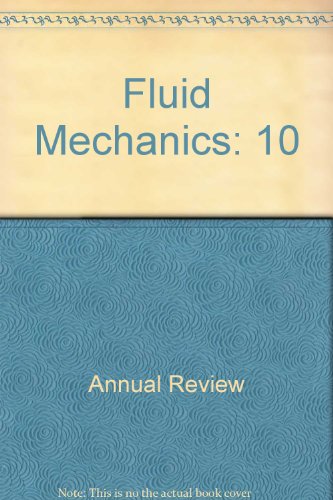Fluid Dynamics of Axial Turbomachinery: Blade- and Stage-Level Simulations and Models
IF 30.2
1区 工程技术
Q1 MECHANICS
引用次数: 19
Abstract
The current generation of axial turbomachines are the culmination of decades of experience, and detailed understanding of the underlying flow physics has been a key factor for achieving high efficiency and reliability. Driven by advances in numerical methods and relentless growth in computing power, computational fluid dynamics has increasingly provided insights into the rich fluid dynamics involved and how it relates to loss generation. This article presents some of the complex flow phenomena occurring in bladed components of gas turbines and illustrates how simulations have contributed to their understanding and the challenges they pose for modeling. The interaction of key aerodynamic features with deterministic unsteadiness, caused by multiple blade rows, and stochastic unsteadiness, i.e., turbulence, is discussed. High-fidelity simulations of increasingly realistic configurations and models improved with help of machine learning promise to further grow turbomachinery performance and reliability and, thus, help fluid mechanics research have a greater industrial impact. Expected final online publication date for the Annual Review of Fluid Mechanics, Volume 54 is January 2022. Please see http://www.annualreviews.org/page/journal/pubdates for revised estimates.轴流式涡轮机械的流体动力学:叶片级和级级的仿真与模型
当前这一代轴向涡轮是数十年经验的结晶,对潜在流动物理的详细了解是实现高效率和可靠性的关键因素。在数值方法的进步和计算能力的不断增长的推动下,计算流体动力学越来越多地为所涉及的丰富流体动力学及其与损失产生的关系提供了见解。本文介绍了燃气轮机叶片部件中发生的一些复杂流动现象,并说明了模拟如何有助于理解它们以及它们对建模提出的挑战。讨论了多排叶片引起的确定性非定常和随机非定常(即湍流)对关键气动特性的影响。在机器学习的帮助下,对越来越逼真的配置和模型进行高保真仿真,有望进一步提高涡轮机械的性能和可靠性,从而帮助流体力学研究产生更大的工业影响。预计流体力学年度评论的最终在线出版日期,第54卷是2022年1月。修订后的估计数请参阅http://www.annualreviews.org/page/journal/pubdates。
本文章由计算机程序翻译,如有差异,请以英文原文为准。
求助全文
约1分钟内获得全文
求助全文
来源期刊
CiteScore
54.00
自引率
0.40%
发文量
43
期刊介绍:
The Annual Review of Fluid Mechanics is a longstanding publication dating back to 1969 that explores noteworthy advancements in the field of fluid mechanics. Its comprehensive coverage includes various topics such as the historical and foundational aspects of fluid mechanics, non-newtonian fluids and rheology, both incompressible and compressible fluids, plasma flow, flow stability, multi-phase flows, heat and species transport, fluid flow control, combustion, turbulence, shock waves, and explosions.
Recently, an important development has occurred for this journal. It has transitioned from a gated access model to an open access platform through Annual Reviews' innovative Subscribe to Open program. Consequently, all articles published in the current volume are now freely accessible to the public under a Creative Commons Attribution (CC BY) license.
This new approach not only ensures broader dissemination of research in fluid mechanics but also fosters a more inclusive and collaborative scientific community.

 求助内容:
求助内容: 应助结果提醒方式:
应助结果提醒方式:


